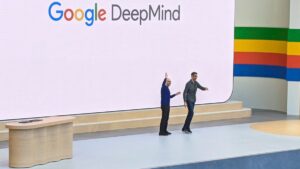DeepMind Announces Plans to Utilize AI Models for Enhancing Physical Robots

Google DeepMind Advances Robotics with New AI Models
Introduction of Gemini 2.0
On a recent Wednesday, Google DeepMind introduced two innovative artificial intelligence (AI) models tailored for robotics. These models, named Gemini Robotics and Gemini Robotics-ER (Extended Reasoning), operate on what Google has labeled its latest and most capable AI system, Gemini 2.0. This leap forward signifies a shift from prior generative AI applications focused primarily on text and images to one that also encompasses actionable commands for robots.
Partnership with Apptronik
To enhance its robotics capabilities, Google has partnered with Apptronik, a robotics developer based in Texas. This collaboration aims to create the next generation of humanoid robots equipped with the state-of-the-art Gemini 2.0 technology. Apptronik has a history of collaboration with notable organizations such as Nvidia and NASA, which adds to its credibility in the field. Recently, Google also participated in a $350 million funding round for Apptronik, underscoring the significance of this partnership in the robotics landscape.
Demonstration of Capabilities
During its announcement, Google showcased videos illustrating the capabilities of the Apptronik robots powered by Gemini 2.0. In these demonstrations, the robots successfully performed tasks like plugging devices into power strips, packing lunchboxes, manipulating plastic vegetables, and zipping up bags—all in response to verbal commands. Although these visual demonstrations were impressive, Google has yet to disclose when we might see this technology available in the marketplace.
Three Key Qualities for AI in Robotics
Google identified three fundamental characteristics that AI models for robotics must possess to be effective and beneficial for users:
- General Adaptability: The AI should be capable of adapting to various situations it encounters in real-world applications.
- Interactivity: The model must quickly comprehend and react to instructions or shifts in its environment, ensuring effective communication and responsiveness.
- Dexterity: The robots should mimic human-like capabilities in manipulating objects with precision and care, similar to how humans use their hands and fingers.
These principles are essential for developing robots that are not just functional but genuinely helpful in assisting users in diverse scenarios.
Features of Gemini Robotics-ER
The Gemini Robotics-ER model is specifically designed as a foundational tool for roboticists, allowing them to train their models effectively. This model will be available not just to Apptronik but also to a select group of "trusted testers" that includes companies like Agile Robots, Boston Dynamics, and Enchanted Tools. This access will enable a wider range of innovation in robotics, testing the capabilities of Gemini 2.0 across various applications.
Industry Context
Google is not the only player in the ongoing pursuit of integrating AI with robotics. OpenAI has also ventured into this domain. Notably, they made a substantial investment in Physical Intelligence, a startup devoted to developing general-purpose AI for robot operation. OpenAI has also focused on strengthening its workforce by hiring leaders in the robotics and consumer hardware sectors, signaling its commitment to this growing field.
In another notable development, Tesla has entered the humanoid robotics market with its Optimus robot, showcasing the rapid evolution and interest from major tech companies in this sector.
Comments from Leadership
Google’s CEO, Sundar Pichai, emphasized the company’s vision, indicating that robotics serves as a vital testing ground for translating AI advancements into practical, physical applications. According to him, these robots will leverage Google’s multi-modal AI capabilities to adapt and make real-time decisions based on their environment.
By continuing to invest in AI-driven robotics, Google and other tech giants are paving the way for a future where robots play an increasingly integrated role in everyday life. As this technology progresses, society may soon witness the kinds of capabilities that were once confined to science fiction becoming a reality.






